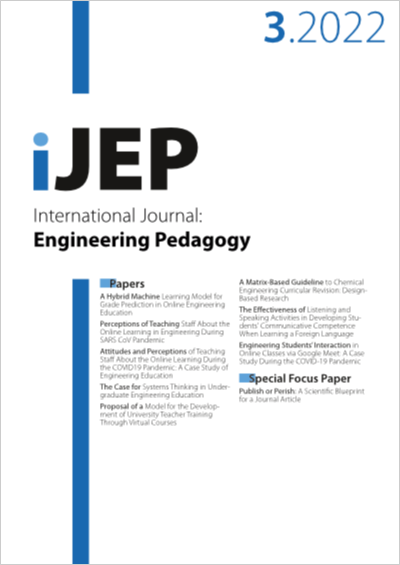The Case for Systems Thinking in Undergraduate Engineering Education
DOI:
https://doi.org/10.3991/ijep.v12i3.25035Keywords:
systems thinking, engineering education, engineering curriculaAbstract
Systems Thinking is currently a popular topic among the general public as well as in colleges and universities. Systems Thinking helps solve complex problems that cannot be solved using conventional means, helps engineers design functional and reliable systems, and helps to understand why the world looks and behaves as it does. However, Systems Thinking is usually not integrated into engineering curricula; instead, it is either taught as a stand-alone, independent program or course, or it is not taught at all. We believe that this is sub-optimal. Just as mathematics, physics, and computer science are integrated into engineering courses as fundamental tools, so should Systems Thinking be. Here we provide several examples demonstrating the application and benefits of Systems Thinking to a variety of engineering disciplines with the objective of convincing university administrators and instructors to integrate it into every engineering discipline.
Downloads
Published
2022-05-31
How to Cite
Monat, J. P., Gannon, T. F., & Amissah, M. (2022). The Case for Systems Thinking in Undergraduate Engineering Education. International Journal of Engineering Pedagogy (iJEP), 12(3), pp. 50–88. https://doi.org/10.3991/ijep.v12i3.25035
Issue
Section
Papers
License
Copyright (c) 2022 Jamie P. Monat, Thomas F. Gannon, Matthew Amissah

This work is licensed under a Creative Commons Attribution 4.0 International License.


